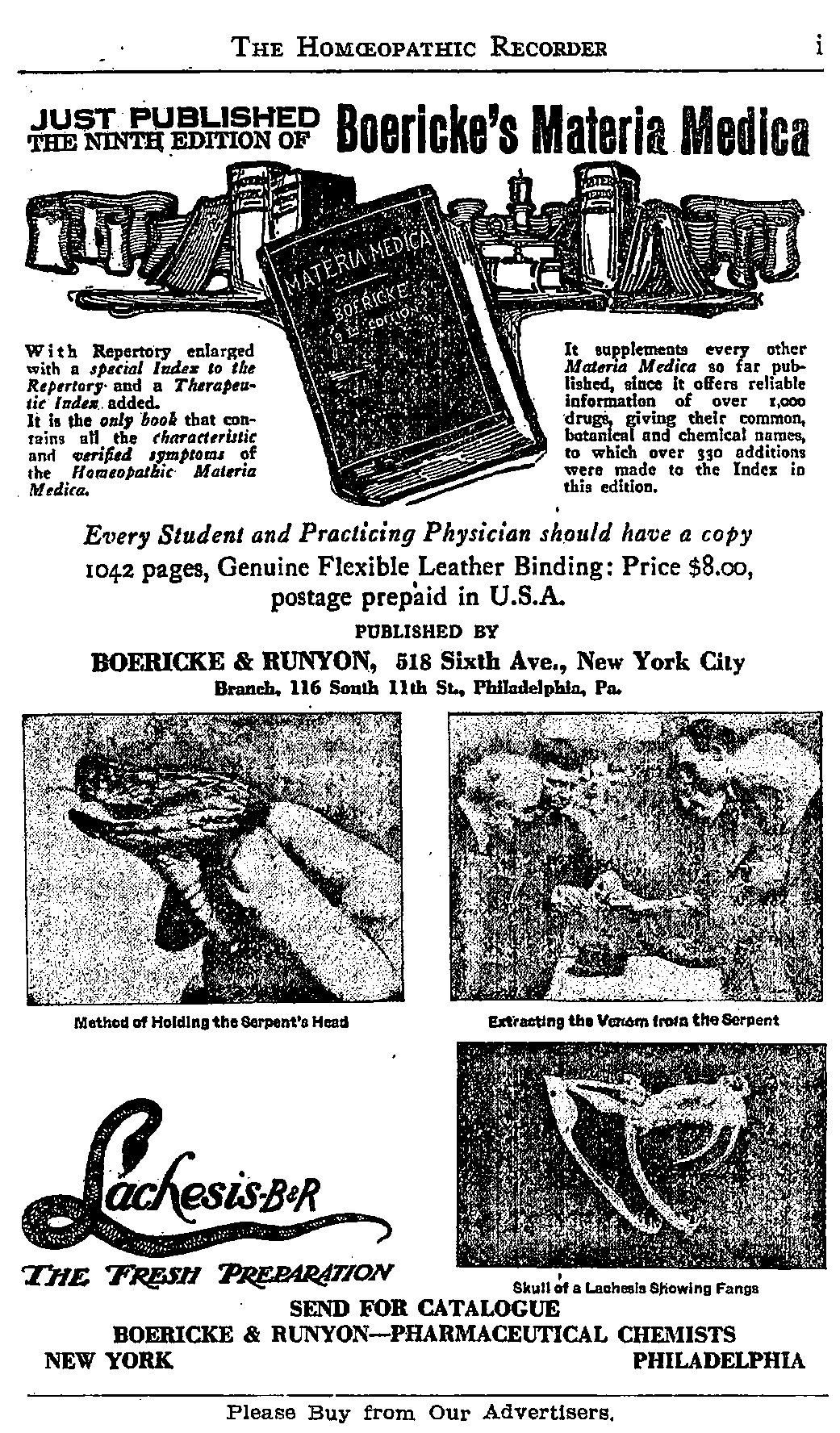Translated for the Homoeopathic Recorder from Leipziger Pop. Z.F. Hom.
Hamamelis Virg. Sensitiveness of the pelvic organs, as well while walking as when in a vertical and in a horizontal position: The blood is black, lumpy and copious. Dose: A coffee spoonful of the extract every hour until the flow stops. We need not take exception to this dose, for the remedy is perfectly harmless. Dr. Bailey relates a case where the patient from an oversight drank a tumblerful of the extract and in consequence saw herself freed from a passive haemorrhage which nothing had been able to check; this was a smallpox patient. He adds that he never yet has been able to check a haemorrhage with infinitesimal doses of this remedy.
It is not so with Ipecacuanha, which he regards as the chief remedy in uterine haemorrhages. In this he prescribes the third or sixth decimal where the blood is of a lively red color, while the patient continually complains of nausea and where the blood comes in rushes with a threatening collapse; often there is also colic. Nash considers Ipecacuanha as better than Secale cornutum in haemorrhages after delivery, and considers the 200th to be more efficient than more massive doses of this remedy.
China. In atony of the uterus, bluish lips, buzzing in the cars, obscuration of the vision, extreme exhaustion menses too early and too copious, the blood black and lumpy; great sensitiveness to the touch and to open air; great weakness owing to the loss of organic fluids of any kind. The scalp is especially sensitive. Patients of this kind often wrap their head up in a cloth. Dose: Ten drops of the 1st or 2d D. Solution in a teaspoonful of water every ten minutes or every half hour. (The Clinique.)
In the session of the “Cercle medicale Homoeopathique des Flandres,” on September 4, 1901, there was a discussion of the same subject, and we here report it as an appendix to the above article. Dr. De Cooman mentioned a case of uterine haemorrhage which lasted for six months with a woman in her climacteric period. Secale 6. Remained without effect; three days afterwards at the least movement the woman would lose blackish lumps. Pulsatilla, absolute rest and the application of cold compresses brought relief, but did not, check the flow. Cinnam., Crocus, Thlaspibursa, hot injections from 1130 to 1190, were without effect. Hamamelis in the mother tincture brought improvement. The presence of contractive pains during the passage of blood led me to prescribe a new Secale, this time in the mother tincture; the haemorrhage stopped in three days. This case shows the necessity of using at times the low potencies. So Digitalis also must be used in massive doses when it is indicated in heart troubles. Dr. De Keghl would have thought of using Bellanonna in metrorrhagia, or China. Dr. Van Ooteghem has had good results from Hydrastis in uterine haemorrhages. Dr. Samuel Van den Berghe alternates in metrorrhagia frequently with Secale and China. With this procedure he has obtained good results in the case of a woman whose menses had always been very copious, almost like a haemorrhage; since four months there had set in consequence an anaemic condition with vertigo and flickering before the eyes. After giving her the 6th potency of these two remedies all flow ceased. Dr. Schmitz mentioned that the late Dr. T. Test had reported the cure of a case of metrorrhagia by a high potency of Secale where the massive dose had proved without effect. Dr. Van den Neucker related that the late Dr. Mouremans in his journal pointed to the virtue of millefolium in preventing haemorrhage after delivery, if a solution of the remedy is given for five or six weeks before. Dr. Schmitz has repeatedly proved the value of Millefolium in haemorrhage from the lungs.


